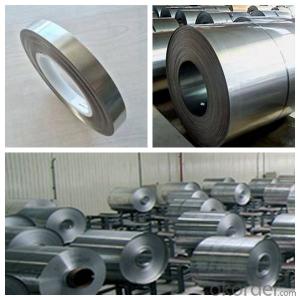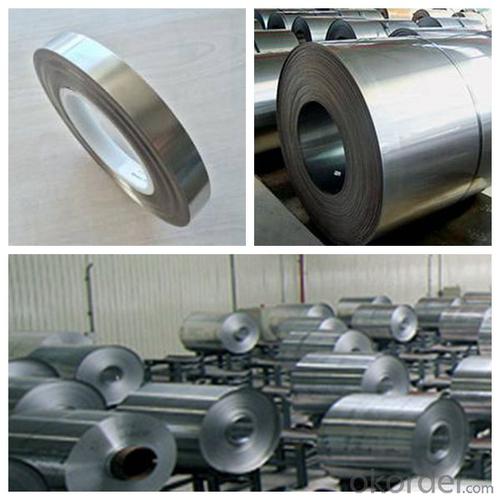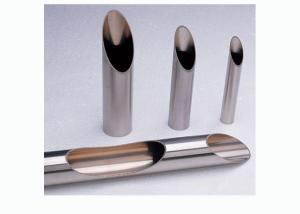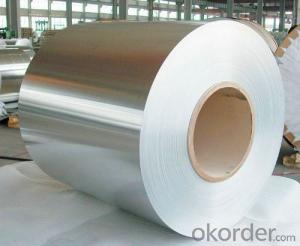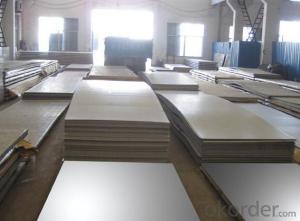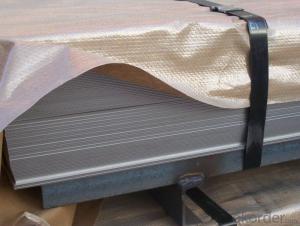Steel Products From China,Stainless Steel Coils,Steel Plates
- Loading Port:
- Tianjin
- Payment Terms:
- TT OR LC
- Min Order Qty:
- 20 m.t.
- Supply Capability:
- 20000 m.t./month
OKorder Service Pledge
OKorder Financial Service
You Might Also Like
Specification
Products Description for Stainless Steel Coils/Sheets:
Type | Stainless Steel Coil /Cold rolled Steel Coils |
Thinckness | 0.23mm-0.8mm |
Diameter | 115mm-560mm |
Quantity | as customer's requirement |
Finish | 2B,BA,HL,MIRROR,NO.1-NO.4,8K,and so on. |
Standard | ASME, ASTM, EN ,BS,GB,DIN, JIS etc |
Material | 201,202, 301,304,410,430,409 |
Application range | Foodstuff, Gas, metallurgy, biology, electron, chemical, petroleum, boiler, nuclear energy, Medical equipment, fertilizer etc |
Package | Standard export sea-worthy packing |
Delivery time | 7-15 days |
Quality | Primary |
Productivity | 3000-4000 tons/month |
Note | We can produce other standard as the customers’ requirement |
Features of Stainless Steel Coils
(1)Good ductility
(2)Good corrosion resistance
(3)Excellent abrasion resistance and fatigue strength
(4)Good weldability
(5)Oxidation resistant performance
(6)Excellent in high temperature
Packaging & Delivery for Stainless Steel Coils/Sheets:
Packaging Detail Standard export packing or following customer's demand
Delivery Time: Within 30-40 days after deposit or according to the order quantity
Detail picture for Stainless Steel Coils/Sheets
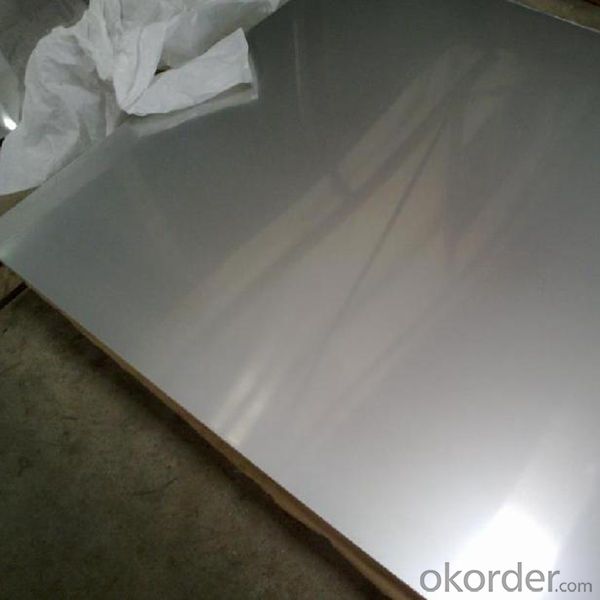
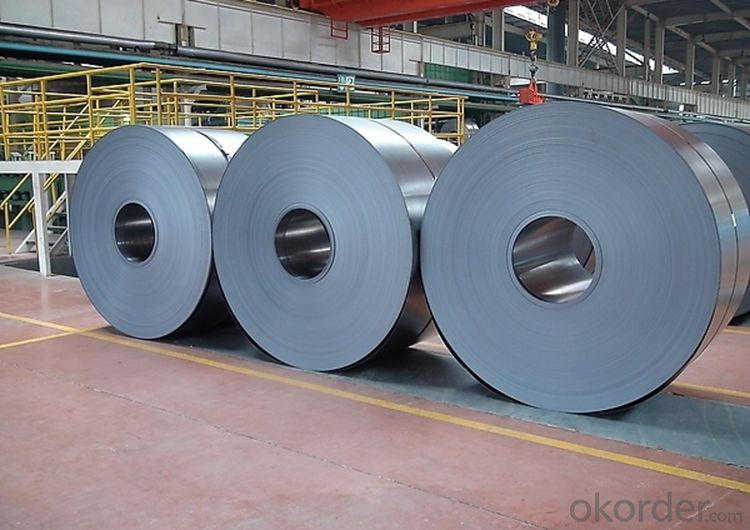
Application of Stainless Steel Coils
(1)Boiler heat exchanger,
(2)Chemical industries,
(3)Hardware fields,
(4)Construction material,
(5)Kitchen utensils,
(6)Building construction,
(7)Medical equipment,
(8)Chemical tank,
(9)Pipe etc
FAQ for Stainless Steel Coils/Sheets:
Q:How to order?
A: Please send us your purchase order by email or fax .or you can ask us to send you a proforma invoice for your order .We need to know the following information for your order.
1) Shipping information-company name, street address, phone number, fax number, destination sea port
2) Product information – Quantity, Specification (steel type, thickness, width, surface finish)
3) Delivery time required
4) Forwarder's contact details if there's any in China
FAQ for Stainless Steel Coils/Sheets:
Q:What are the advantages of your company ?
A: We have many professionals, technical personnel, more competitive prices and best after-dales service than other stainless steel companies.
Q:Can you arrange the shipment ?
A: Sure we can help you with the shipment. We have forwarders who have cooperated with us for many years.
- Q: What are the benefits of using perforated stainless steel sheets in acoustics?
- Perforated stainless steel sheets offer several benefits when it comes to acoustics. Firstly, they provide excellent sound absorption properties. The evenly distributed perforations in the stainless steel sheets help to break up and scatter sound waves, reducing their energy and preventing them from bouncing back into the room. This helps to minimize echo and reverberation, resulting in a more comfortable and intelligible acoustic environment. Additionally, perforated stainless steel sheets can be customized to meet specific acoustic requirements. The size, shape, and pattern of the perforations can be adjusted to achieve different levels of sound absorption. This allows for precise control over the acoustics of a space, making it suitable for a variety of applications such as concert halls, recording studios, theaters, or even office spaces. Furthermore, perforated stainless steel sheets are durable and long-lasting. Stainless steel is known for its corrosion resistance, which means that the sheets can withstand harsh environments without deteriorating over time. This makes them suitable for both indoor and outdoor applications, ensuring a consistent acoustic performance for years to come. Another advantage of using perforated stainless steel sheets is their aesthetic appeal. The perforations can be designed in various patterns and sizes, offering a visually pleasing and modern look. This makes them a popular choice for architectural and design applications, where both acoustics and aesthetics are important. In summary, the benefits of using perforated stainless steel sheets in acoustics include excellent sound absorption properties, customizable options, durability, and an attractive appearance. These qualities make them a versatile and effective solution for improving the acoustic performance of various spaces.
- Q: What type of stainless steel plate made by imported vibrating disk?
- The company has a professional design, development, production, customer service and other functions, can you demand, we provide solutions at the same time, and to achieve rapid delivery, to ensure product quality on the basis of our commitment: each vibration plate from manufacturing to the factory, all in strict accordance with the company's quality assurance system, quality and to complete the process standard, allow customers ease of use
- Q: What are the different types of stainless steel sheet perforations available?
- There exists a variety of stainless steel sheet perforations, each possessing its own distinctive characteristics and applications. Among the most prevalent types are: 1. Round hole perforations: These perforations, characterized by evenly spaced round holes, are the simplest and most commonly employed. They ensure sufficient airflow and visibility. 2. Square hole perforations: Similar to their round counterparts, square hole perforations offer a distinct aesthetic and may be utilized for ventilation or decorative purposes. 3. Slotted perforations: Elongated in shape, slotted holes provide a larger open area compared to round or square holes. Consequently, they are often employed for drainage or filtering applications. 4. Hexagonal hole perforations: Hexagonal holes, featuring an exclusive pattern, are frequently used for architectural or decorative applications. They are also effective in facilitating airflow and visibility. 5. Decorative perforations: These perforations exhibit diverse shapes and designs, such as floral, geometric, or abstract patterns. Primarily employed for decorative purposes, they are commonly found in building facades or interior design. 6. Micro-perforations: These minute holes, typically less than 1mm in diameter, are utilized in applications necessitating high precision and fine filtration, like speaker grills or air diffusers. When selecting the appropriate perforation type, it is crucial to consider the specific requirements of your application. Factors such as open area, strength, visibility, and aesthetics must all be carefully evaluated to guarantee the most suitable choice for your specific needs.
- Q: What are the weight calculations for stainless steel sheets?
- The weight calculations for stainless steel sheets depend on their dimensions (length, width, and thickness) and the specific density of stainless steel, which is approximately 7.9 grams per cubic centimeter. To calculate the weight, you multiply the volume of the sheet (length x width x thickness) by the density.
- Q: How do you straighten bent stainless steel sheets?
- To straighten bent stainless steel sheets, you can use a combination of heat and pressure. First, heat the bent area using a heat gun or an oxy-acetylene torch until it becomes red-hot. Once heated, carefully apply pressure with a clamp or a mallet to bend it back into shape. Be cautious not to overheat the metal or apply excessive force, as it may cause further damage or deformation.
- Q: Can stainless steel sheets be used for facade cladding?
- Yes, stainless steel sheets can be used for facade cladding. Stainless steel is a durable and corrosion-resistant material, making it suitable for exterior applications such as facade cladding. It provides a sleek and modern aesthetic while also offering protection against harsh weather conditions.
- Q: What's the surface of the 304 stainless steel matte board?
- Silvery white, matte, hot rolled to specified thickness and then annealed and descaling. A rough, matt surface that does not require surface gloss
- Q: Are stainless steel sheets resistant to acids?
- Acids don't stand a chance against stainless steel sheets. This remarkable material is famous for its ability to resist corrosion, and that includes acids too. You see, stainless steel contains chromium, which forms a protective layer called a passive film. This film acts like a barrier, preventing acids from reacting with the metal. It's like a superhero shield against a wide range of organic and inorganic acids. Of course, the level of resistance can vary depending on the type of stainless steel. Grades such as 304 and 316 are especially tough against acids, which makes them perfect for industries like chemical processing, food processing, and pharmaceuticals. But let's not forget, even though stainless steel sheets can handle acids pretty well, there are some aggressive acids and highly corrosive environments that can still break through their defenses. So, it's crucial to seek advice from experts and choose the right grade of stainless steel for acid-resistant applications.
- Q: What are the different types of patterned finishes available for stainless steel sheets?
- Stainless steel sheets come in a variety of patterned finishes, each offering a unique aesthetic and functionality. Some of the most commonly used finishes include: 1. Diamond: This finish has a raised diamond-shaped texture on the surface, providing better grip and slip resistance. It is often used for flooring or industrial equipment. 2. Linen: The linen finish resembles woven fabric, adding a subtle elegance to stainless steel sheets. It is commonly used in interior design applications like wall cladding or decorative panels. 3. Checkered: This finish creates a checkerboard-like appearance with a grid of raised squares or rectangles. It adds visual interest and can give a retro or industrial look to stainless steel sheets. 4. Bead Blasted: In this finish, fine glass beads are blasted onto the surface to create a matte texture with a slightly rough surface. It is often used in architectural applications to provide a modern and uniform appearance while reducing glare and fingerprints. 5. Etched: This finish involves chemically altering the surface to create intricate patterns or designs. It can range from simple line patterns to complex images and is commonly used for decorative purposes like signage, artwork, or custom designs. 6. Sandblasted: Similar to bead blasting, sandblasting uses high-pressure sand or other abrasive materials to create a textured surface. It provides a rougher and more pronounced pattern, making it suitable for industrial or rugged applications. 7. Mirror: Although not technically a patterned finish, the mirror finish is highly popular for stainless steel sheets. It is achieved through a series of polishing and buffing processes, resulting in a highly reflective surface similar to a mirror. It is commonly used in architectural elements like cladding or decorative accents. In conclusion, the choice of patterned finish for stainless steel sheets depends on the desired aesthetic, functionality, and specific application requirements. Each finish offers a distinct look and texture, providing endless possibilities in design.
- Q: How do you prevent galling when using stainless steel sheets?
- To prevent galling when using stainless steel sheets, it is important to apply a lubricant or anti-seize compound on the surface before any contact or movement occurs. This helps to reduce friction and allows for smoother motion, preventing the occurrence of galling. Additionally, using proper tools and techniques, such as using low cutting speeds and avoiding excessive pressure, can also help prevent galling in stainless steel sheet applications.
Send your message to us
Steel Products From China,Stainless Steel Coils,Steel Plates
- Loading Port:
- Tianjin
- Payment Terms:
- TT OR LC
- Min Order Qty:
- 20 m.t.
- Supply Capability:
- 20000 m.t./month
OKorder Service Pledge
OKorder Financial Service
Similar products
Hot products
Hot Searches
Related keywords
